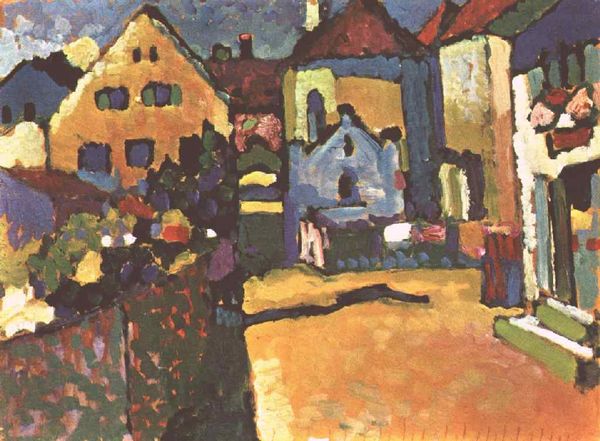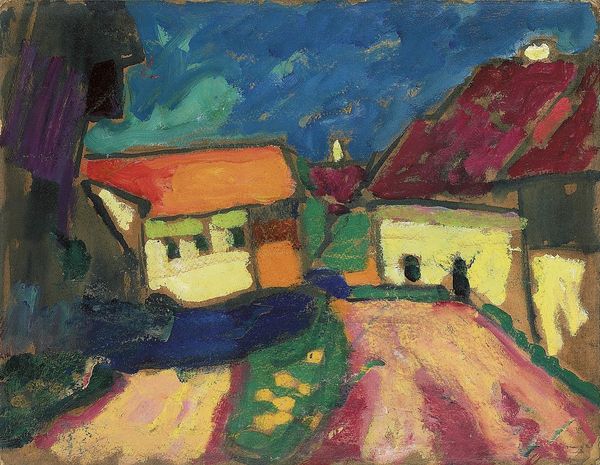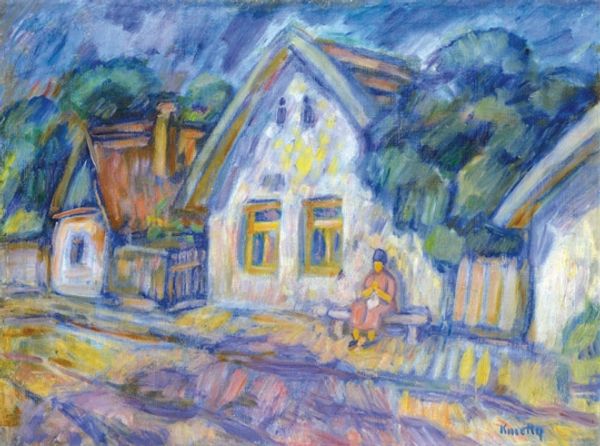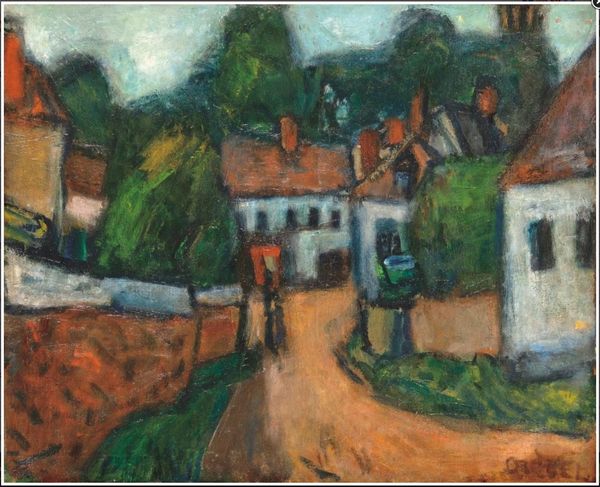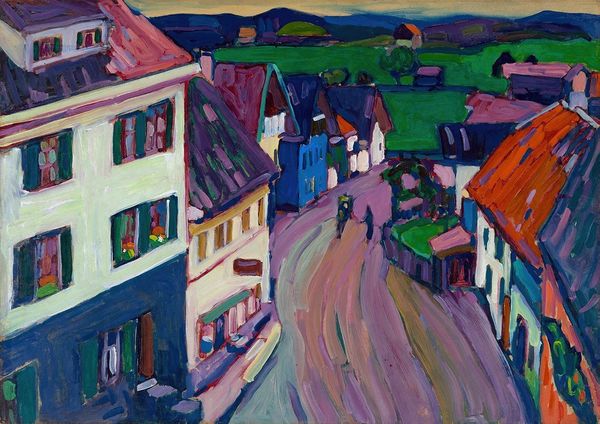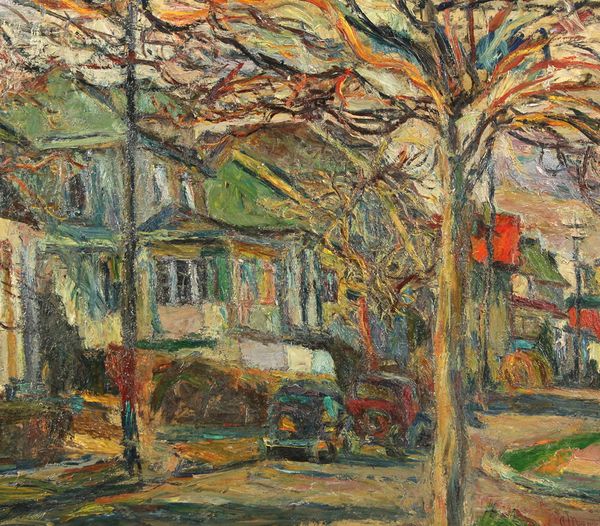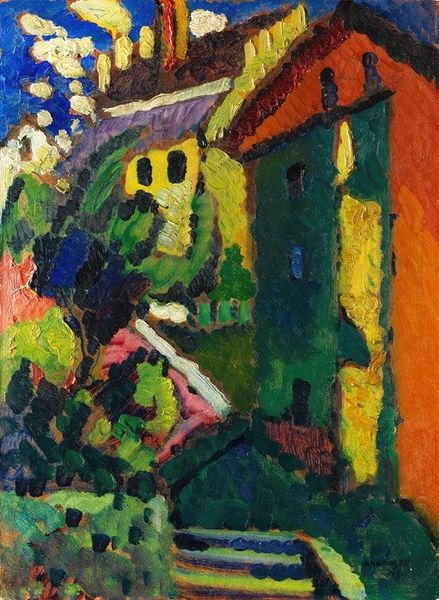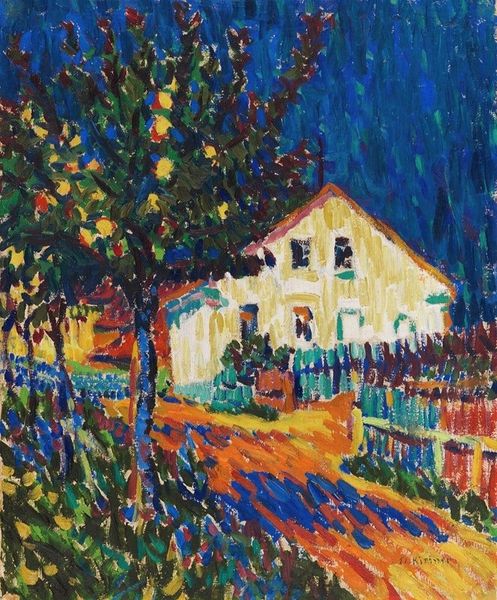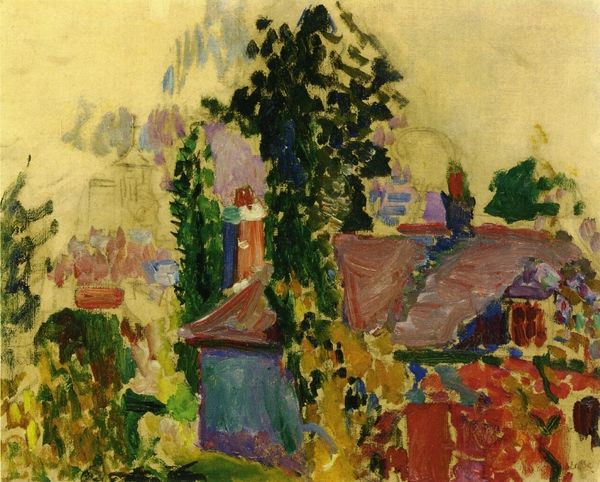
oil-paint
#
fauvism
#
fauvism
#
oil-paint
#
landscape
#
german-expressionism
#
impressionist landscape
#
expressionism
#
cityscape
#
painting art
#
expressionist
Copyright: Public Domain: Artvee
Curator: Welcome. Let's pause a moment with Wassily Kandinsky's 1909 oil on canvas, "Green Lane in Murnau." What do you make of it at first glance? Editor: My initial impression is pure sunshine and storybook charm. It’s got this childlike wonder about it. Makes me think of building forts in the summer, utterly unbothered. Curator: I'd say your intuitive response aligns with Kandinsky's developing exploration of Fauvist and early Expressionist tenets here. Look closely at the composition. See how the arrangement isn't conventionally perspectival but rather spatially compressed. Editor: Absolutely. The way those blocks of yellow press forward denies depth. The artist certainly manipulates a limited palette of bold color to almost vibrate on the canvas. The intensity creates the depth of feeling, doesn't it? Curator: Precisely. The emotional impact seems to override representational accuracy. For instance, the rendering of buildings and landscape morph into almost geometric forms, rendered with striking colors—red roofs, blue shadows—all independent of naturalistic appearance. Editor: So it seems that he’s dismantling our assumptions of what a landscape should convey—breaking the representational chains to prioritize direct expression. Do you think that is maybe why it also seems so dreamlike? Curator: I do. His move toward abstraction frees him to play with symbolic weight—the painting of daily life is transformed into this visceral inner world. Even ordinary architectural and natural elements seem to gain a mythic dimension. Editor: Knowing this piece comes relatively early in his progression toward total abstraction, it’s fascinating to trace these seeds of liberation from visual reality. To see him still anchoring the composition within something discernible. A road, buildings, even a little garden. Curator: Consider also the art historical context. While tethered to the motifs and stylistic components of landscape art, its subjective handling also echoes developments happening in Post-Impressionism. This blend positions Kandinsky within this broader evolution of vanguard painting at the beginning of the 20th century. Editor: Standing here, thinking about his brave, innovative work, this is such a great painting that really reflects something pure, raw, and exciting in Kandinsky's creative pursuit. Curator: Yes, that excitement feels ever present, doesn't it? It's as if each stroke has intention but also exuberance, almost reckless at times. Very memorable indeed!
Comments
No comments
Be the first to comment and join the conversation on the ultimate creative platform.
